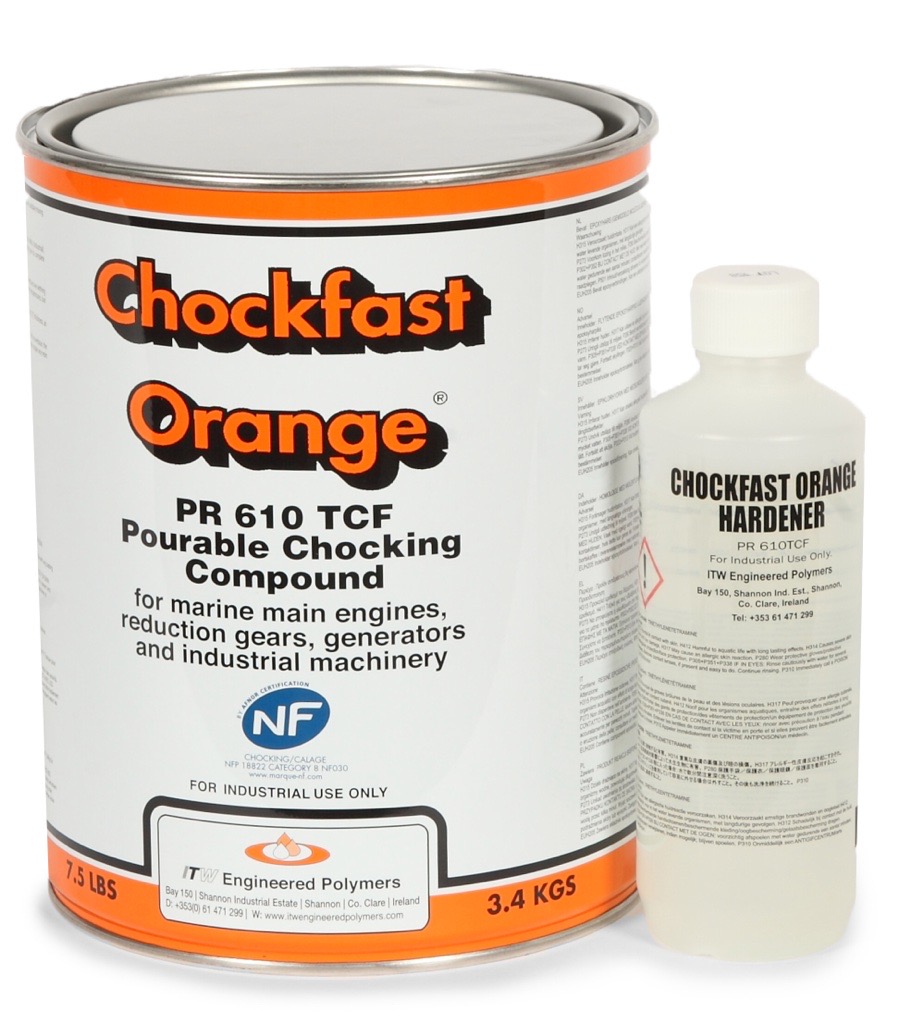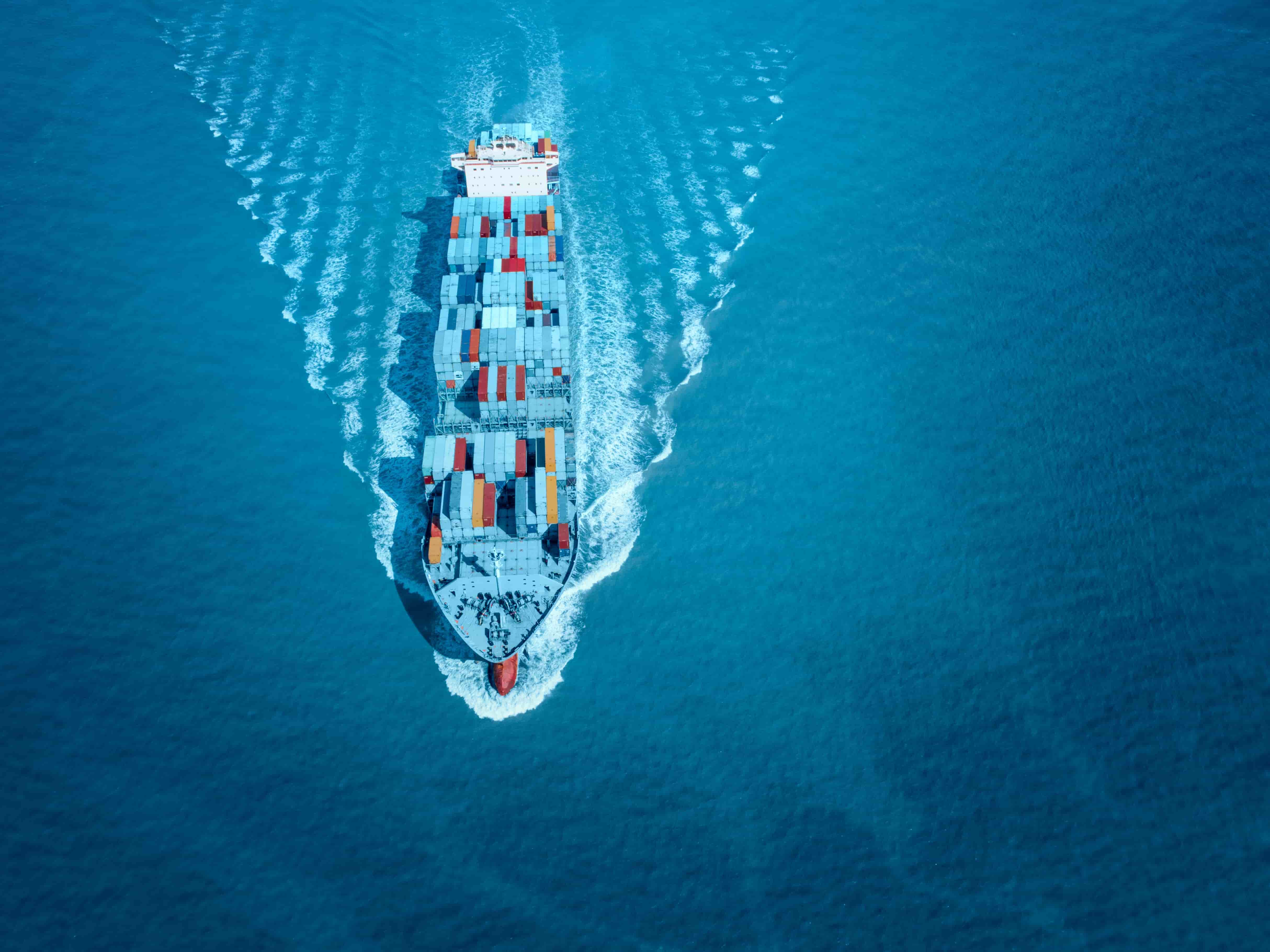- TOP
- Corporate Information
- Project Story
- Chockfast Recognized by the World’s Largest Engine Manufacturer
Pride in Supporting Japan’s Shipbuilding Since the End of the War
Today, Japan is the world’s third largest* shipbuilding nation. It is no exaggeration to say that Japanese shipyards with personnel possessing excellent engineering skills have supported the world. Harada Corporation boasts a business history in the shipbuilding field of more than 60 years, and this business is still one of its pillars. The beginning of this business dates back to the end of the war. In Japan, which was impoverished as a defeated nation, the shipbuilding industry was the foundation for reconstruction. Harada Corporation, too, needed to enter the profitable shipbuilding industry to expand its business.
However, the company had no connections in the shipbuilding industry. One day, a contact person in one of our client companies requested a quote for shipbuilding tools from us, confusing our company name with a different company named Harada Shoji. Thus, having started with an accidental misunderstanding, we have found a way from there to the shipbuilding industry. The business for those small tools eventually extended to large machinery and became the foundation of our business that continues today.
It is the Machinery Team (referred to below as the MC Team) that has long been involved in this shipbuilding business. Currently, the MC Team imports high-quality, high-value-added equipment and materials, such as vacuum toilet equipment and piping-related products, mainly from Europe, and sells them.
Becoming Standard Practice in the Shipping Industry
Chockfast is one of the MC Team’s main products. The MC Team has been dealing with this product since the 1970s and is not a new product at all. However, it is a significant product not only for the MC Team but for Harada Corporation. This is because Chockfast is a product that impressed the name of Harada Corporation on the shipping industry so strongly that it now equals Harada Corporation.

Chockfast was an epoch-making product that at once changed the shipbuilding method that had been used for many years. Large equipment on ships, such as engines and generators, must not only be placed but firmly installed in the engine room. As ships are built by welding large steel plates, there are invisible strains on the floor (the deck). When large equipment is installed, inevitably a gap is created between the deck and the equipment. If the gap is left, cracks will occur from vibrations or other causes, which can lead to damage, possibly causing a serious accident. Therefore, the method called an iron liner, in which a steel plate was shaved, scraped by hand, and then filled into the gap between the equipment and the deck, was applied for the installation. It required delicate work with skilled techniques.
On the other hand, Chockfast is an epoxy-based resin. Once poured into the gap, it hardens. Anyone can carry out the installation easily. That is the reason why this product was epoch-making.
Now, Chockfast has become standard practice in the shipbuilding industry, and it is even said, “You cannot build a ship without Chockfast.”
Labor Saving Will Be the Key
In the early 1960s, we had not yet started to deal with Chockfast. Around that time, Japan had the advantage of building ships at low cost because labor wages in Japan were cheaper than in Europe. Therefore, many foreign-flag ships were built in Japanese shipyards. However, over the course of five or six years, the shipbuilding industry gradually shifted to countries where even lower labor wages were available.
The MC Team grew alarmed that the volume of construction in Japan of foreign-flag ships would eventually decline. Then, we, as the team, focused on labor saving. We thought that we could compete with foreign competitors by reducing wasteful spending and lowering costs. After asking ourselves if there were products that could help our efforts at labor saving, we found Chockfast, an epoxy-based resin produced by Philadelphia Resin Corp. This product was used to fill in the gaps in mechanical products, such as automobiles. We came up with the idea to apply it to shipbuilding.
The afore-mentioned work of scraping the iron liner by hand was hard labor, and it took time and effort for workers. In using Chockfast to fill the gaps, anyone could engage in the work easily and reduce man-hours and save labor. However, the difficult days continued; even though we proposed Chockfast, we could never have customers understand this product, let alone think about it. Therefore, we changed the targeted plan from use during new shipbuilding to use for repair work. This went successfully, and we were able to use Chockfast in the repair of US-flag ships. That was in 1975.

In addition, assuming that our sales efforts were not successful because our proposals were not convincing enough, we decided to call a manager of Philadelphia Resin Corp. over to Japan and have him stationed in Kobe. With the manager as technical support accompanying our sales staff, they explained the global track record of Chockfast, and the characteristics and reliability of epoxy resins, which were of concern to customers. Accordingly, we could gradually establish a track record of repairs for foreign-flag ships.
The next step was to get the results of repairs on Japan-owned ships. We, however, again hit a big wall there. At that time, Chockfast had obtained classification certification in the U.K., U.S., France, and Norway, but not in Japan. The classification certificate by Nippon Kaiji Kyokai (ClassNK) was indispensable for us to have our product used by Japanese shipowners. However, when we negotiated with ClassNK for the classification certificate, they insisted that they could not issue a certificate to a party that had no track record. No matter how much we emphasized our records, they declined our request, claiming that records with foreign-flag ships were not applicable.
One day, we overheard information that engine-locking bolts broke every year on a Japanese-owned ship that was in dock on a regular basis. We immediately rushed to the ship and suggested that the problem could be solved with the use of Chockfast. Then, a Technical Superintendent, who took our track record in repair on American-flag ships, decided to adopt our product for the first time as a Japanese shipowner. This led to an increase in the use of Chockfast for repairs by Japanese shipowners, which served as a steppingstone to the application for the ClassNK’s classification certificate.
World’s Largest Engine Manufacturer Starts Using Chockfast – and Our Sales Channels Expand
To expand the business with Chockfast, we increased the number of sales staff. Thus, though we started our sales activities targeting ships that would require repair, our real target was to have our product used for newly-built ships.
However, our efforts for the use of Chockfast in new construction reached a deadlock owing to conservative Japanese shipyards. In the middle of such a situation, we found out about an Outfitting Design section chief at a shipyard, who was positively engaged in increasing productivity. We received confirmation from that section chief that he would like to use Chockfast if he could obtain the shipowner’s approval. Therefore, we visited the shipowner’s company and managed to conclude a trial use for installing a generator. The trial amazingly demonstrated that Chockfast was good enough to be used.
By using this achievement as leverage, we desired to spread this product to other shipyards. Thus, we tried to have it used for installing an engine, which was key equipment on ships. By having Chockfast used for engine installation, not only would we make a great achievement, but it would also enable shipyards to save costs and labor.
On such an occasion, we received the information that there was a person at a shipyard who was interested in the cost-cutting effect of Chockfast. That shipyard had considered the improvement of its severe labor environment. Again, after negotiations, we managed to reach trial use.
However, another problem arose. One of the world’s largest engine manufacturers suddenly refused to approve the use of Chockfast in installing their engine on that ship. Of course, we could not give in. We made a strong appeal for the reliability of Chockfast according to the performance test results. After great effort, we finally gained approval for its use from the manufacturer. This was decisive in the use of Chockfast finally becoming standard practice in Japan. From around 1978, Japanese major shipyards began to use Chockfast one after another.

Create a Legend at Harada Corporation
The sales of Chockfast had grown each year since 1994 and hit a record high in 2008.
How did we make it happen?
Back around 1994, the MC Team was struggling as our businesses with major shipyards had peaked. Therefore, we strived to find a way in businesses with small and medium-sized shipyards. While several dozen ships are built in major shipyards each year, vessels built in small and medium-sized shipyards number at least 200 per year. We thought that even though the volume of materials used for a single vessel might be small, the total accumulated volume would be enormous. We wasted no time in promoting active sales activities to small and medium-sized shipyards nationwide. We also focused on using Chockfast in new applications other than engines and generators. As a result, our sales increased significantly.
Needless to say, this was only possible because of the achievements that predecessors at Harada Corporation had established, as well as the name recognition of Chockfast. Nevertheless, the market expansion to small and medium-sized shipyards, which had not been explored until then, opened up the possibilities of Chockfast. It is a matter of fact that that business expansion was attributed to the efforts of the MC Team.
Shipbuilding is one of the businesses representing Harada Corporation. The environment surrounding shipbuilding is severe, and we have to pay close attention to the future trend of the Japanese shipbuilding industry. However, the shipbuilding business will not disappear from Japan. Harada Corporation has a mission to pass on the shipbuilding business to the next generation. We support the Japanese shipbuilding together with our customers. That is the pride of Harada Corporation.
Providing a breath of fresh air in the Japanese shipbuilding industry. That is our ongoing challenge.
* Source: “Changes in Ship Deliveries by Ship-Building Country as of 2021.” Maritime Statistics Handbook 2019. By the Japanese Shipowners’ Association <https://www.jsanet.or.jp/data/pdf/2021data20-2.pdf> (Original in Japanese)




